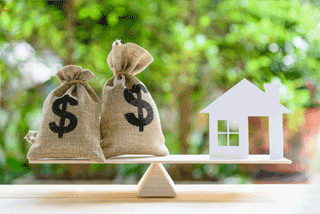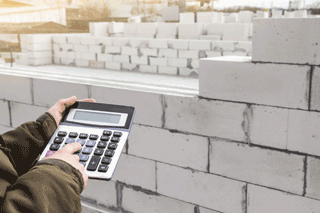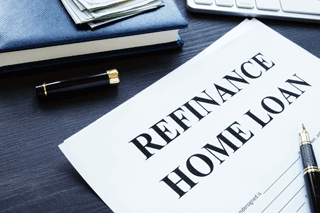Quote of The Week
“The conditions are just not in place for the sort of house price declines that some forecasters are putting out there.’’
Real estate economist Nerida Conisbee
Property Prices Remain Stubborn
 While property prices may have begun to drop in some cities as a result of rising costs of living, they remain extremely high compared with pre-pandemic levels.
While property prices may have begun to drop in some cities as a result of rising costs of living, they remain extremely high compared with pre-pandemic levels.
The latest market analysis from PropTrack shows that national average house prices are just 1.66% below their peak of late 2021, after a 0.43% drop in July.
Despite that, dwelling values remain 33% above what they were in March 2020.
That increase was driven in part by the huge rise in regional cities where dwelling values are 49% higher than they were before Covid.
While the latest figures show drops in Sydney and Melbourne, which are both down 3% since the start of the year, other areas are still recording price growth.
In July Sydney dwelling values dropped by 0.4% and Melbourne dropped by 0.61%, while Brisbane and Darwin recorded no change.
Adelaide dwelling values increased by 0.4% in July, while Perth rose by 0.12% and Hobart increased by 0.26%.
No Evidence Of Looming Crash
 There is little evidence that the property market will undergo a sharp correction, according to real estate economist Nerida Conisbee.
There is little evidence that the property market will undergo a sharp correction, according to real estate economist Nerida Conisbee.
Conisbee says even though sentiment has shifted there is little mortgage distress among home-owners at the moment.
As a result, she says it’s hard to understand why so many forecasters were predicting big price drops.
“The conditions are just not in place for the sort of house price declines that some forecasters are putting out there,” she says.
Datt Capital fund manager Emmanuel Datt describes the current forecasts about house prices as “nothing short of ludicrous”.
He says low vacancy rates and growing rents mean property remains an attractive prospect for long-term investors.
Datt says in the current market rents are rising at more than 10% a year.
While borrowers may not like increasing interest rates, Datt says they will do everything they can to not default on their loan and will cut discretionary spending and look at cheaper refinancing options.
Building Costs To Ease Next Year
 Surging construction costs have made many projects unviable, with a number of developers deciding to shelve projects until next year when prices are expected to ease.
Surging construction costs have made many projects unviable, with a number of developers deciding to shelve projects until next year when prices are expected to ease.
Quantity surveying firm Rider Levett Bucknall (RLB) predicts increases in construction costs will slow from 11.5% this year to 5.5% in 2023 on the Gold Coast while in Melbourne they are expected to halve to 4%.
In Sydney, cost increases are forecast to drop from 6.9% to 3.9%.
RLB Ocean head of research Domenic Schiafone expects pressure on supply chains will start to ease by the end of this year.
“This easing of demand should allow manufacturing and logistics to get back to normality,” he says. “The easing of demand should also see a softening of material prices, with the high levels of ‘demand-led price premiums’ reducing due to lessening demand.”
Home-building costs were one of the key factors driving up Australia’s inflation figures with new dwelling prices by 20.3% in the past year.
Owner-occupiers Make Loan Switch
 The number of people refinancing with different lenders is on the rise as borrowers try to secure better deals in a rising interest rate environment.
The number of people refinancing with different lenders is on the rise as borrowers try to secure better deals in a rising interest rate environment.
Australian Bureau of Statistics figures show the number of borrowers changing lenders is 25% higher than it was in June last year.
ABS Head of Finance and Wealth Katherine Keenan says the latest figures show the value of owner-occupier housing loan commitments increased by 9.7% in June.
“As interest rates rose in recent months, borrowers sought loans with lower interest rates and lenders competed to attract them,” Keenan says.
First Home Buyer numbers are down 8% over the month to 9,393, which is now similar to pre-pandemic levels.
Loans to investors fell by 6.3% nationally. In NSW loans are down 10.5% to $439m, Victoria, 3.4% to $100m and Western Australia down 10.6% to $78m.
ABS building approval data also shows the total number of buildings approved fell 4.7% in June, after a 10.8% rise in May.
Discounts For Low-Risk Borrowers
 While interest rates generally are on the way up, banks are still offering discounts and incentives to win over borrowers.
While interest rates generally are on the way up, banks are still offering discounts and incentives to win over borrowers.
Research by financial comparison site Canstar shows that up to half of all lenders are now offering discounts to borrowers who have a sizeable deposit or home equity.
Canstar’s Steve Mickenbecker says numerous lenders looking to boost their market share are offering the discounts.
The Canstar research shows 49% of banks are offering customers with a 40% deposit or equivalent equity in their home a discount on their interest rate worth an average 0.21%.
The research also shows that those with a 30% deposit or similar level of equity can find deals for lower rates with almost a third of lenders offering a 0.13% reduction.
Mickenbecker says borrowers need to take initiative and ask new or existing lenders about discounts on offer.
“Do not wait for a bank to tell you because it rarely happens,” Mickenbecker says.




